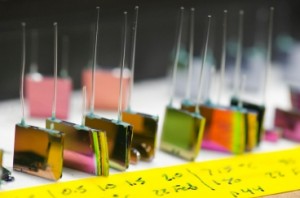If you thought photovoltaics can only get energy from the Sun, then you were wrong. An MIT team of researchers have invented a device that produces electricity from heat. The process uses the photovoltaic effect as the middleman and is three times more efficient than the most efficient lithium ion batteries on market today.
92 percent of all the energy we use involves burning something and then turning the heat into mechanical work. Therefore it would be much simpler and would make sense improving the whole process so it turns heat into electricity without involving moving parts.

“Being able to convert heat from various sources into electricity without moving parts would bring huge benefits,” says Ivan Celanovic ScD ’06, research engineer in MIT’s Institute for Soldier Nanotechnologies (ISN), “especially if we could do it efficiently, relatively inexpensively and on a small scale.”
The principle of thermophotovoltaics has been discovered in the 60′s, but so far nobody succeeded making the transformation of heat into light that would be harvested by a photovoltaic cell efficient enough to compete with other forms of transformation.
The solution developed by the MIT team changes the properties of a slab of tungsten by etching billions of nanoscale pits on its surface, so that when heated, it emits only certain wavelengths of light, corresponding to the ones that the solar cell (photovoltaic device) is most sensitive and efficient to.
A button-sized thermophotovoltaic generator has been built for demonstration purposes that harnesses the heat energy of burning butane, or another that gets its power from a small radioisotope. The butane-powered one could run three times longer than a lithium ion battery on one charge, and the radioisotope one can run for thirty years without any kind of intervention. Recharging can, of course, be made instantly, by refilling the “tank.”
Of course, one could think of more than a couple of heat sources. Basically burning anything would work, and the one thing that comes to my mind that would also satisfy the most convinced environmentalists would be burning sun-generated hydrogen. But you may also burn wood, or coal, or even diesel – the cell wouldn’t mind.
Another application of MIT’s thermophotovoltaic generator can be the recovery of waste heat from factories and internal combustion engines, which would make them much more efficient, and would supplement if not replace inefficient thermoelectric devices already in use for such purposes.
 Follow
Follow